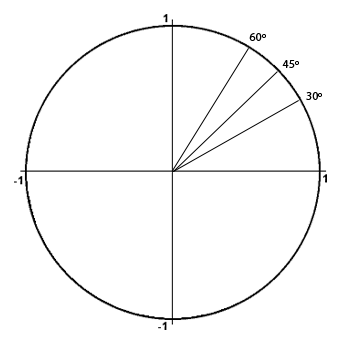
Radians in Trigonometry

When you do trigonometry, at some point, you will find weird angle, not the degrees but something like π/2. What are they?
Okay. There are three ways to read angles. Degrees, what we all know, radians and gradian. That angle with π is called radian. Where did you see π before? When we find the area of circle or circumference, right? There you go. It is all about circumference of a unit circle. What is the circumference of a circle? 2πr (r=radius). Because radius of an unit circle is 1, circumference of it should be 2π. What is the angle of a complete circle? (Think as the value of Θ of the triangle on the unit circle) 360º. So, 360º=2π. Simple, right? Then, what will 180º be? Because it is half of 360º, it will be half of 2π, so π. Here, we can find the eaisiest one, we can easily find other angles too. 180º=π. Let's find other angles, then.
*****
180º=π
90º=π/2 (half of 180º)
45º=π/4 (half of 90º, one-fourth of 180º)
60º=π/3 (one-third of 180º)
30º=π/6 (half of 60º)
*****
Then, let's apply radians to the trigonometry!
What is sin(π/4)? So, we now know that π/4 is same as 45º. What is sin45º? It was 1/√(2) or √(2)/2. Therefore, sin(π/4) is 1/√(2) or √(2)/2. Easy, right? When you just know the radians, trigonometry of it is simple, just like degrees.
When you keep using radians, it can be easier than degrees because it is easier to see the rates with π. If the angle is really big like 1980º, it is hard to divide it in 360, but when it is 11π, it is much easier to see that it is same as π.
If you have anything that want me to explain more or if you have any questions, please leave it on this page.